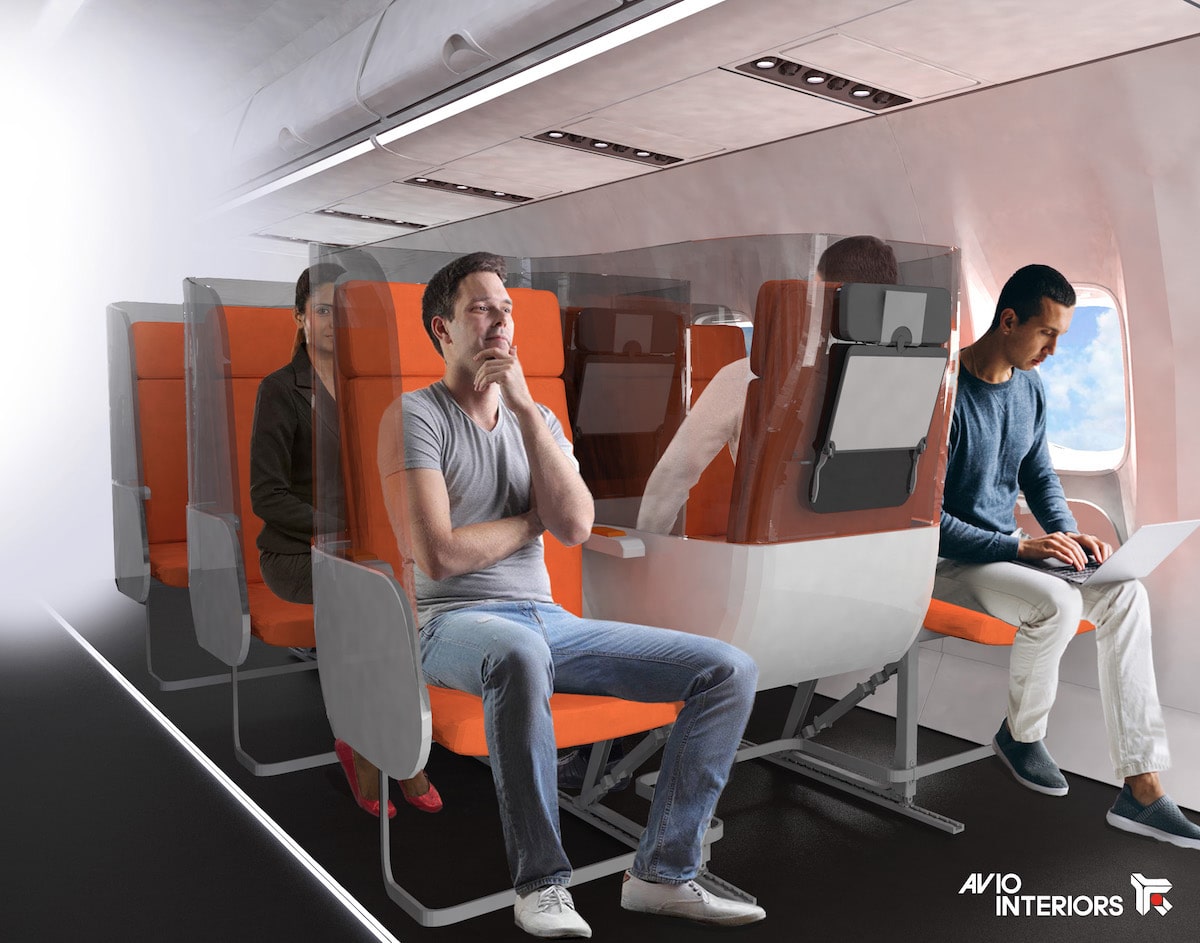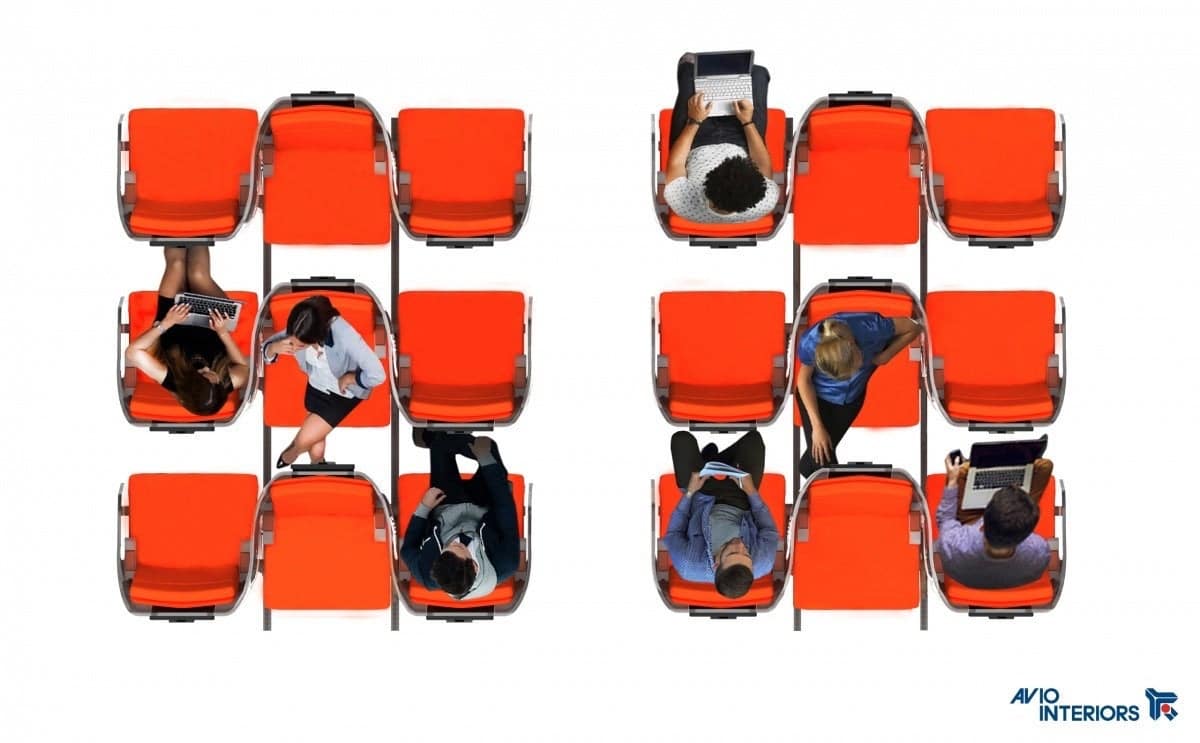
As the coronavirus continues to change the way we live, many industries are trying to plan for a new normal that will occur when businesses start up again. This is particularly critical in the travel industry. Air travel is down 95% and airlines are beginning to report their losses. Both Delta and American Airlines have stated that revenue is down 90% in the first quarter. Thankfully, one company is already thinking of the future and is proposing a way for passengers to begin traveling again, safely.
Avio Interiors is an Italian airline seat manufacturer and they've released two design possibilities to block the spread of germs during air travel. Their Janus concept sees the middle seat turned around and transparent enclosures wrapped around each seat to ensure isolation. For those of us used to cramped economy seating, the concept is also fairly appealing from a comfort level—though some people might not enjoy the idea of sitting backward.
One issue with the Janus is that it would be a costly venture for airlines to refit their entire cabins. The seating would have to be completely reconfigured for this to work, something that the already financially hurting airlines might not be willing to pay for. It's also not clear if the seats would recline and how things like meal service would work, as to reach the middle and window seat, the air host would need to breach the isolation barriers.

At the same time, Avio Interiors also released a more simplified concept—one that could be fitted on existing seating configurations. Glasssafe is a transparent hood that fits around each seat, which allows airlines to keep passengers in close quarters while providing some isolation. While this seems to be a more practical solution, there are still safety issues to consider. Both designs could present obstacles for passengers in case of evacuation, which would diminish their chances for approval.
And then there's the need for sterilization in between flights. Simple Flying points out that prior to the coronavirus, airlines had a flight turnaround time of just under an hour. This only allowed for deep cleaning of the restrooms and galleys. With research showing that the virus can survive for 2 to 3 days on plastic, intense cleaning would need to occur each time passengers disembark, bumping up turnaround time significantly. However, whether airlines choose this design or not, in a post-coronavirus world, they may be forced to increase their turnaround times to disinfect the aircraft anyway.
While there are pros and cons to each design, it's interesting to see how companies are already looking to the future. Certainly, this won't be the last time we see industrial design used as a way for the public to continue their normal routines while we wait for a coronavirus vaccine.
Avio Interiors has conceived two solutions to prevent the spread of germs on airplanes. The first involves rotating the middle seat.

This creates a zig-zag that provides better isolation, especially when coupled with a protective barrier.

An alternative is to fit existing seating arrangements with a transparent shield to protect passengers.























































































